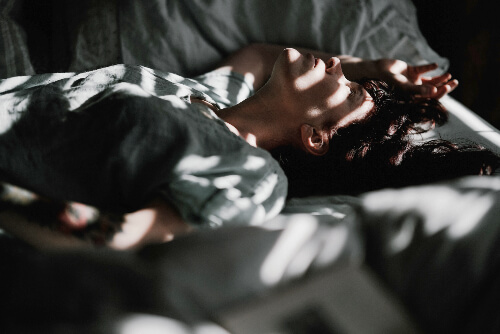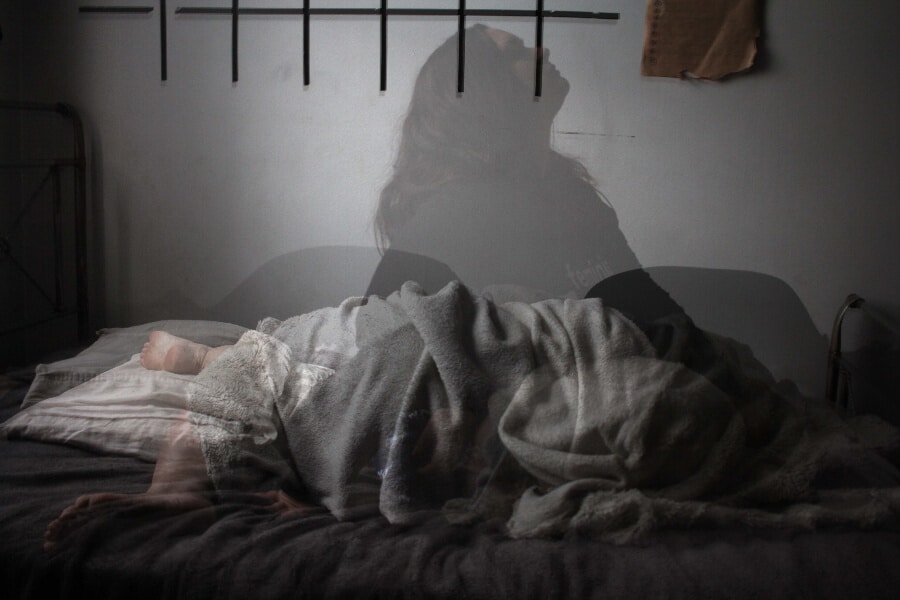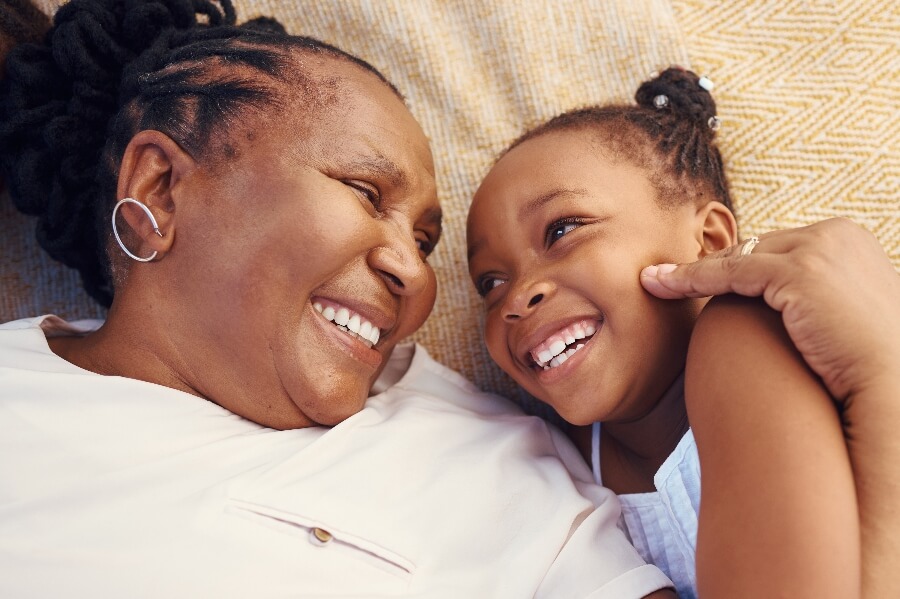Warning: If you aren’t already worried about sleeping, stop reading this. It’s the ultimate irony that insomnia can get worse if you worry about insomnia.
But, of course, you are still reading this, because, like me, you probably can’t sleep. According to the American Sleep Association, insomnia is the most common sleep disorder and affects about 30 percent of adults for a few weeks or so a year, while an unlucky 10 percent have chronic insomnia, which can last for months or, in my case, years. Thirty-five years, to be exact. I famously cannot sleep. Well, okay, not famously because I’m not famous. But if I were, my sleeplessness would be the stuff of legends.
My Sleepless Life Story
 According to my mom, I was never one of those babies who went down easily. One of my earliest memories is as a toddler in my crib playing with Weebles and marveling at my mom, who was passed out in a nearby chair, waiting for me to fall asleep. I was the embodiment of the Weeble who wobbles but won’t fall down. At around age 13, I got actual insomnia. My mom and sister would go to sleep, but I’d lie in bed and just … be awake. My mind would go over anything and everything that happened that day like a radio that never stopped playing. By college, I was still not sleeping, but making use of my nighttime wakefulness. I’d start my studies around 11:00 or 12:00 at night, tearing through textbooks, often in the bathtub because why not? My roommates weren’t going to witness my weirdness. I surrendered, thinking my brain just perks up in the wee hours, like, “What’s happening people?! Let’s DO this thing!” And in a way I came to enjoy it. I had delicious hours to myself of quiet, magical night.
According to my mom, I was never one of those babies who went down easily. One of my earliest memories is as a toddler in my crib playing with Weebles and marveling at my mom, who was passed out in a nearby chair, waiting for me to fall asleep. I was the embodiment of the Weeble who wobbles but won’t fall down. At around age 13, I got actual insomnia. My mom and sister would go to sleep, but I’d lie in bed and just … be awake. My mind would go over anything and everything that happened that day like a radio that never stopped playing. By college, I was still not sleeping, but making use of my nighttime wakefulness. I’d start my studies around 11:00 or 12:00 at night, tearing through textbooks, often in the bathtub because why not? My roommates weren’t going to witness my weirdness. I surrendered, thinking my brain just perks up in the wee hours, like, “What’s happening people?! Let’s DO this thing!” And in a way I came to enjoy it. I had delicious hours to myself of quiet, magical night.
Who has insomnia after a C-section? I did.
In my 40s, I had a daughter, and I thought, okay now I will definitely go to sleep earlier because parents are, by definition, tired, and children, by definition, wake up at the crack of dawn. But you know who has insomnia even after their C-section? I do. Even when my daughter was an infant I would be breastfeeding at 4:00 in the morning, wide awake and terrified, because I knew the morning would be hell.
Now my daughter is six, I’m past my mid-40s, and my insomnia has gotten worse, not better. I’m not alone. According to a survey of 4,270 Britons and Americans, women are 40 percent more likely than men to “always” sleep poorly, and 55 percent of women aged 45 to 54 say they don’t sleep well. Estrogen and progesterone play an important role in sleep, and as perimenopause and menopause sets in, they wreak havoc. And if you have night sweats, which I do, you wake up by turns freezing (because you’re soaked in sweat) and hot (because you’re, uh, sweating). Not to mention that women my age have a lot on our plate—kids, work, aging parents. It all makes sleeping that much harder.
For me, insomnia is an albatross—t’s ruining my life. Sometimes I’m so tired in the afternoon I literally can’t see. I went to an eye doctor, who told me my eyeglass prescription isn’t the problem, it’s my insomnia. Something about the brain being so tired it can’t process the information your eyes send it. Perfect! Something had to change—or maybe a lot of things had to change.
My First Anti-Insomnia Move
The first thing I did was stop drinking tons of caffeine. I have my morning latte, and niente after that. To be honest, I can’t tell if it helps that much, but it seems like a good idea not to pound green tea all day and expect to rest, so I stick to it. Thinking maybe it was my diet, I also cut out all sugar, including carbs. I lost 10 pounds, but I’m not sleeping any better. So I turned to other things—especially pharmaceutical things, because I’m an American, and I believe everything can and should be fixed by a pill, goddammit.
Chocolate with melatonin worked—for a while.
First I took Ativan. It’s a benzodiazepine meant to quiet anxious thoughts. It works—my brain’s radio turns down, and I worry less at night, but it doesn’t actually help me sleep. So when I found some organic chocolate with melatonin in it at Whole Foods—packaged in a delightful little box with a happy moon on it—I thought, Okay, delicious friend, let’s give this a go.
For a while, it worked! I was overjoyed, going to bed at 11:00 p.m. and falling into a deep, undisturbed slumber. But after about six months, I started waking up, sometimes 15 or so times in a row, and gasping because I was not breathing. I have asthma, so I went to my pulmonologist. He said my lungs were fine and really had no idea why this was happening but suggested I stop taking the melatonin and see if the whole not breathing thing went away. I stopped taking it, and I started breathing again at night, so that chocolate lightning bolt became a no-go.
Finally I tried Ambien. Not only did it not seem to help me get to sleep earlier, when I did finally drift off I got night terrors and started sleepwalking. The last time it happened, I dreamed some sort of Devil Incarnate of Evil entered my bedroom and said it was going to kill me, so in the dream I got out of bed and went into my bathroom to get my taser. (Yes, I’m that person. I believe in protecting myself.) Hours later, to my horror, I woke up next to my bed in a crouching position, holding my actual taser. I could have tased myself, or my husband, or my child. Never again, Ambien.
Sorting Out My Sleep Hygiene
It was time to think outside the prescription bottle, which for me means searching the Internet for ideas, and some of them actually worked. I learned how to improve my “sleep hygiene”—no Netflix for an hour before bed, no looking at my phone, either. As my doctor put it, I can have Candy Crush or I can sleep, but I can’t have both. Screens emit a kind of light that keeps us alert, and the whole engagement with your device keeps your mind activated. I took my newsfeed off my phone and now read the New York Times once in the morning and once in the evening so I don’t go to bed in an anxious, “the world is ending” state. I still read novels to relax, but not on a lit-up, wakefulness-triggering screen. (Thank you, Kindle Paperwhite.)
Jennifer Piercy’s voice on the app is like a soporific angel.
I also take a bath every night, with Epson salts and dim lighting. And this is just a personal thing, but I’ve found I’m the type of person who can’t go to bed hungry, so I have an evening snack—just some almonds or my daughter’s string cheese—and this helps, too.
On the marriage front, I set a new rule for my husband. He loves to talk about logistics before bed, like who’s picking up our daughter from school or mentioning the work trip he’ll be taking for two weeks to Africa and asking if I can be available for all child-rearing duties. This behavior is a hard no. If something occurs to him after 8:00 p.m., I’m essentially a bank—he can talk to me about it the next business day.
And I’ve started guided meditation. Some people use Calm, but my personal favorite is the Insight Timer app, and they’re not even paying me to say that. (I wish.) It’s free, and there are so many meditations for the sleepless that I’ll never run out of new ones to listen to. My sleep guru these days is Jennifer Piercy, who practices Yoga Nidra, which purports to take you into a deeper state of consciousness—a place where you are not fully asleep or fully awake—until you let go and drift off. It sounds a little woo-woo, but I haven’t heard the end of most of her meditations so that’s a win. Piercy’s voice is as soothing as a soporific angel, and she must be doing something right: One of her guided meditations has been listened to a whopping 4.8 million times. I consider every single one of these listeners my secret, desperate friend.
Workbooking Your Way to Sleep
Still the magic bullet eluded me. Around 3:00 a.m. a month ago I ordered a workbook off Amazon called Quiet Your Mind and Get to Sleep: Solutions to Insomnia for Those with Depression, Anxiety, or Chronic Pain by Colleen E. Caney and Rachel Manber. The book uses Cognitive Behavioral Therapy for insomnia, or CBT-I, and addresses things like how to quiet a “racing mind,” reset your biological clock, and improve the quality of your sleep. According to the National Institute of Health and the Mayo Clinic, CBT-I can be even more effective than a sleeping pill, and it works better in the long term.
Making those lists quiets my racing mind.
So far I’ve found some tools I can use, some of which surprised me. For example, apparently when I’m tossing and turning, I should get out of bed, do something in another room (like read a book), and return to bed when I’m tired. If it doesn’t work, I’m supposed to repeat it as many times as necessary. The logic is that you can condition yourself to not sleep in bed and your mattress should linked to dozing, not doing other things—but I’m still experimenting with this tactic. I get supremely annoyed when I have to get out of my warm bed and disrupt my snuggling cat, Bill Baby, to hang out in a freezing living room. But at this point, I’ll try anything.
The worksheets, however, have been more helpful. A favorite helps challenge long-held beliefs like, “I can’t function unless I sleep X number of hours,” and “If I don’t sleep, my day is ruined.” Because believing I’m going to turn into Al Pacino in Insomnia if I don’t get eight hours is anything but reassuring.
I’m also using a technique that can help with bedtime worrying. Two hours before bed I make a list of the things I’m worrying about and write one action I can take the following day. The action can be as small as, say, “I will reach out to a friend,” or, if I don’t know what action to take, I can write that I will give it another day before I do anything at all. If I begin to worry the moment my head hits the pillow, I remind myself that I’ve already made a plan.
But more than anything, I’ve realized through all the tips, tactics, and strategies I’ve tried that my attitude about sleep is the most important thing of all. When I lie down to take a nap, I don’t worry that I can’t sleep. I’m thrilled about sleeping and think about how delicious I feel in my bed for a few minutes until I drift off happily. I’m learning to translate that to my nighttime sleep. The thing that’s helping the most now is looking forward to the moment that I turn off the lights at night and snuggle with Bill. I invite sleep into my life, and oftentimes lately, it comes.
***
Deanna Kizis is a freelance journalist, novelist, and screenwriter. Her work has appeared in many top U.S. publications including Elle, Harper’s Bazaar, Elle Decor, Cosmopolitan, People, Details, Entertainment Weekly, Vanity Fair and Variety.





















0 Comments